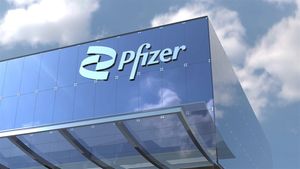
The healthcare sector experienced a significant downturn on Thursday, September 25, 2025, shedding a notable -1.67% of its value and sending ripples of concern through the broader financial markets. This sharp decline, which outpaced the overall market's performance, immediately signaled investor apprehension regarding a sector traditionally viewed as defensive and resilient.
The immediate implications saw a retreat from healthcare-focused equities, with major indices feeling the drag from one of their largest components. Analysts are scrambling to pinpoint the precise catalysts for such a pronounced sector-wide correction, as the market grapples with renewed uncertainty surrounding an industry critical to both public well-being and economic stability.
Unpacking the Factors Behind the Decline
Thursday's pronounced decline in the healthcare sector appears to be a confluence of several impactful factors, creating a perfect storm for investor retreat. A primary driver seems to be renewed legislative pressure on drug pricing and healthcare costs. Rumors, which gained significant traction throughout the day, suggested that a bipartisan group of lawmakers was nearing an agreement on a comprehensive bill aimed at increasing price transparency and negotiating drug prices, particularly for high-cost specialty medications. Such a move would directly impact the profitability margins of major pharmaceutical and biotechnology companies.
Adding to the sector's woes were several disappointing clinical trial announcements. Early-stage data for a highly anticipated Alzheimer's drug from a prominent biotech firm reportedly failed to meet its primary endpoints, leading to a sharp sell-off in that company's stock and creating a ripple effect across the broader biotech sub-sector, as investors reassessed risk in developmental pipelines. Concurrently, a major medical device manufacturer issued a revised earnings outlook, citing supply chain disruptions and weaker-than-expected demand in certain elective procedure categories, further dampening sentiment across the medical technology space. This combination of potential regulatory headwinds, clinical setbacks, and company-specific operational challenges created a pervasive negative sentiment that drove the sector's broad-based sell-off throughout the trading day.
Companies Navigating the Headwinds: Potential Winners and Losers
The -1.67% slump on September 25, 2025, undoubtedly created clear winners and losers within the diverse healthcare landscape. Pharmaceutical giants, particularly those with a heavy reliance on high-priced specialty drugs, faced significant pressure. Companies like Eli Lilly and Company (NYSE: LLY) and Merck & Co., Inc. (NYSE: MRK), often seen as bellwethers for the pharmaceutical industry, saw their share prices dip as concerns over potential drug pricing legislation intensified. Their extensive pipelines and current revenue streams could be directly impacted by government intervention, prompting investors to de-risk.
Similarly, several biotechnology firms, especially those with significant capital tied up in research and development for novel therapies, experienced substantial declines. The disappointing clinical trial results mentioned earlier, though specific to one company, cast a shadow over the entire biotech sub-sector, leading to a broader re-evaluation of risk. Smaller, pre-revenue biotech companies, which rely heavily on investor confidence and future approvals, were particularly vulnerable.
Conversely, certain segments of the healthcare sector, though still impacted by the overall bearish sentiment, might be better positioned to weather the storm or even emerge stronger. Healthcare providers and managed care organizations, such as UnitedHealth Group Incorporated (NYSE: UNH) or CVS Health Corporation (NYSE: CVS), could potentially benefit from increased patient volumes if new policies expand access to care, or if they can effectively manage costs under new regulatory frameworks. Furthermore, companies focused on generic drugs or those with diversified portfolios less exposed to specific legislative risks or single-product clinical trial outcomes might demonstrate greater resilience. Defensive healthcare plays, such as certain medical device companies with established product lines and strong market share, could also see a quicker rebound once the initial shock subsides.
Wider Significance: Broader Trends and Regulatory Ripples
The healthcare sector's sharp decline on September 25, 2025, is more than just a single-day event; it underscores several broader industry trends and significant regulatory implications that have been simmering beneath the surface. The renewed focus on drug pricing and healthcare cost containment reflects a persistent political and public demand for affordability. This event highlights the ongoing tension between pharmaceutical innovation, which requires substantial investment, and the public's ability to access and afford life-saving treatments. It suggests that the era of unchecked drug price increases may be drawing to a close, forcing companies to rethink their pricing strategies and potentially pivot towards volume-based models or greater R&D efficiency.
The potential for new legislation on drug pricing could have significant ripple effects on competitors and partners across the healthcare ecosystem. Contract Research Organizations (CROs), which support drug development, could see shifts in demand if pharmaceutical companies adjust their R&D priorities. Healthcare insurers might find themselves in a more favorable position if drug costs decrease, potentially leading to improved margins or the ability to offer more competitive plans. Historically, similar pushes for healthcare reform, such as the Affordable Care Act, have led to periods of significant market volatility and strategic re-evaluations within the industry. This current event serves as a stark reminder that regulatory shifts can fundamentally alter the competitive landscape and investment thesis for an entire sector.
What Comes Next: Navigating the Future of Healthcare
Looking ahead, the healthcare sector faces both short-term volatility and long-term strategic recalibrations in the wake of Thursday's significant decline. In the immediate future, investors should anticipate continued market sensitivity to any further news regarding legislative progress on drug pricing and additional clinical trial outcomes. Companies with strong balance sheets and diversified product portfolios may prove more resilient, while those heavily invested in high-risk R&D or reliant on single, high-priced therapies could face sustained pressure.
In the longer term, this event may accelerate strategic pivots within the industry. Pharmaceutical companies might increase their focus on rare diseases or niche markets where pricing flexibility remains, or they could invest more heavily in biosimilars and generics to offset potential revenue losses. Mergers and acquisitions could see a resurgence as larger players seek to acquire innovative technologies at potentially lower valuations or consolidate market share to gain negotiating leverage. The emphasis on value-based care models, where providers are compensated for patient outcomes rather than just services rendered, could also intensify, pushing healthcare systems towards greater efficiency and integrated care solutions. Market opportunities may emerge in areas like digital health, preventative medicine, and personalized diagnostics, which could offer cost-effective solutions and are less directly exposed to traditional drug pricing debates.
Wrap-Up: A Sector at a Crossroads
Thursday, September 25, 2025, marked a pivotal day for the healthcare sector, with its -1.67% decline serving as a potent reminder of the complex interplay between innovation, regulation, and market sentiment. The key takeaways from this event are clear: the pressure on drug pricing and healthcare costs is intensifying, and the market is highly reactive to both legislative threats and clinical development setbacks. This suggests a period of heightened scrutiny and potential re-evaluation for many healthcare companies.
Moving forward, the market will likely remain cautious, with investors closely monitoring policy developments from Washington and scrutinizing company-specific earnings reports and pipeline updates. The lasting impact of this event could be a more disciplined and cost-conscious healthcare industry, driven by a greater emphasis on demonstrable value and sustainable pricing. Investors should watch for strategic shifts by major players, including increased M&A activity, diversification efforts, and deeper dives into innovative, value-driven solutions. While challenges persist, this period of adjustment could also pave the way for a more resilient and ethically aligned healthcare market in the long run.
This content is intended for informational purposes only and is not financial advice







